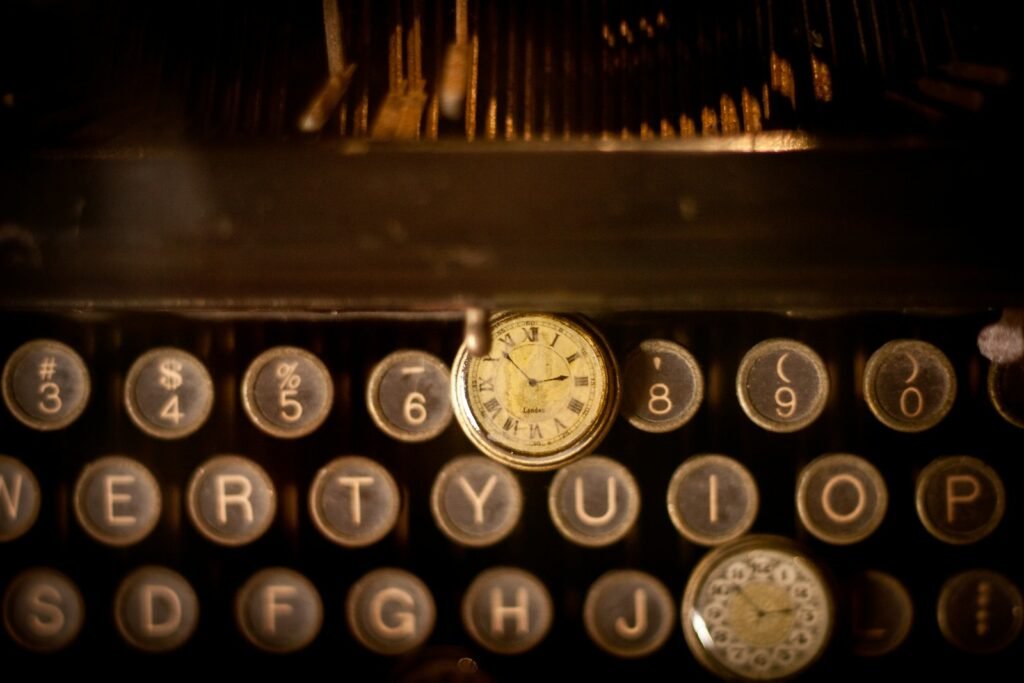
Descriptive Essays: Painting a Picture with Words
When delving into the realm of descriptive essays, one is faced with the perplexing task of crafting a narrative that bursts forth with vivid imagery and emotion, transporting the reader to an alternate reality. It’s like embarking on a journey where words are your paintbrushes, each stroke carefully placed to evoke a kaleidoscope of feelings and sensations. As Henry Miller once philosophized, “One’s destination is never a place but a new way of seeing things.” Descriptive essays possess the uncanny ability to transform the mundane into the extraordinary, infusing even the most ordinary scenes with vibrant colors and intricate details.
In this enigmatic world of descriptive writing, precision reigns supreme. Every word selected serves as a burst of color on the canvas of your essay, adding layers of depth and complexity. Echoing Vincent van Gogh’s sentiment, “I am seeking, I am striving, I am in it with all my heart,” each word in a descriptive essay is meticulously chosen to not only depict what is visible but also what is felt, heard, and even smelled within the scene being portrayed. The essence lies in encapsulating a moment in time and immortalizing it on paper for others to partake in its splendor.
Analytical Essays: Digging Deeper into the Text
When delving into the realm of analytical essays, envision yourself as a literary sleuth, akin to Sherlock Holmes armed not with a magnifying glass but with a pen. Your mission: plunge into the depths of the text, unearth enigmatic meanings, untangle intricate themes, and decipher symbols like a covert operative decoding classified messages. It’s not merely about skimming the surface; it’s about excavating beneath the words on the page to unveil the hidden trove of ideas lurking below.
In this domain of analytical essays, there is no space for superficiality or accepting things at face value. As E.M. Forster eloquently pondered, “How do I know what I think until I see what I say?” The essence lies in stripping away layers of text, scrutinizing each word, sentence, and punctuation mark with an acute gaze. So don your detective cap, wield your trusty pen, and prepare to immerse yourself in the abyss of text like an intrepid explorer on a relentless pursuit for enlightenment.
Purpose of Descriptive Essays
Let’s delve into the enigmatic realm of descriptive essays. Picture yourself not merely penning words about a delectable burger, but rather weaving a spellbinding tapestry that leaves the reader salivating with each luscious detail you unveil – the tantalizing sizzle of the patty as it dances on the grill, the velvety cheese cascading over its edges, and the crisp lettuce coyly peering from between the buns. Descriptive essays serve as an enchanting feast for your reader’s imagination, beckoning them to almost taste, touch, smell, hear, and see every vivid scene you paint with your eloquent prose.
Within a descriptive essay lies a wondrous mission – to whisk your audience away to an alternate reality where they can fully immerse themselves in what you depict on a sensory level. It transcends mere enumeration of ingredients; instead, it is an artful creation of an immersive sensory journey that lingers within one’s consciousness long after perusing its final lines. As eloquently articulated by renowned wordsmith Maya Angelou: “I’ve learned that people will forget what you said, people will forget what you did, but people will never forget how you made them feel.” Such is the bewitching allure of descriptive essays for us passionate writers.
Purpose of Analytical Essays
Oh the enigmatic world of analytical essays, where brilliance reigns supreme. These essays are like intellectual acrobats, flipping and twisting through the complexities of a text with ease. No surface-level analysis here, we’re plunging headfirst into the abyss of intricate details, unearthing the secrets that lie dormant beneath the words.
In an analytical essay, we aren’t merely regurgitating information or recounting a tale. Oh no, we are akin to detectives on a relentless pursuit for truth and meaning. Themes are scrutinized, characters are dissected, and symbolism is unfurled with precision and finesse. Like a modern-day Sherlock Holmes armed with a magnifying glass, we delve deep into the labyrinthine depths of literature.
As Alan Turing once mused, “Sometimes it is the people no one imagines anything of who do the things that no one can imagine.” In this realm of analytical essays, it is our duty to envision what others cannot fathom; to peer beyond the facade and unearth the invaluable treasures hidden within a text’s essence.
Focus in Descriptive Essays
When delving into the realm of descriptive essays, one must master the art of conjuring a rich tapestry within the reader’s psyche. Envision yourself as a culinary virtuoso, meticulously assembling a masterpiece where every element plays an integral role. The hues, fragrances, and tactile sensations harmonize to create an immersive journey that lingers in the mind long after consumption. As Eudora Welty eloquently phrased it, “Each narrative holds its own unique essence; transplant it elsewhere and its identity fades… Fiction draws breath from its setting.”
Yet heed this caution, dear wordsmith! Ere you inundate your audience with a torrent of descriptors and comparisons, remember that equilibrium is paramount. In the wise words of Mark Twain, “The chasm between apt verbiage and near-miss terminology is akin to nightfall versus fireflies.” Thusly season your prose judiciously – just enough to titillate without overwhelming the palate.
Focus in Analytical Essays
Analytical essays, they’re akin to the enigmatic Sherlock Holmes of the literary universe. Always poised with their detective caps on, ready to plunge deep into the text, in search of clues, cryptic meanings, and untangling the mysteries veiled within the words on the page. It’s not merely about skimming superficially; oh no! These essays revel in peeling back layers upon layers, exploring every crevice and corner, ultimately reaching the crux of the matter. As Agatha Christie once mused, “The best time for planning a book is while you’re doing dishes,” similarly when crafting an analytical essay, true magic unfolds amidst intense analysis – connecting dots and unearthing insights that may elude others.
In this realm of analytical essays, focus is paramount. It’s akin to solving a perplexing puzzle – haphazardly piecing together fragments won’t suffice. No each piece must be meticulously chosen, scrutinized from all angles to discern its place in the grand scheme. As Albert Einstein famously remarked,” Creativity is intelligence having fun,” within analytical essays domain it involves flexing one’s mental faculties letting intellect roam free as one weaves a narrative that captivates and enlightens simultaneously. So dear writer when forging your analytical opus remember to remain sharp stay curious and primarily keep your focus unwavering.
Language in Descriptive Essays
Language in descriptive essays is like a whirlwind of colors on an artist’s canvas – unpredictable, bursting with life, and absolutely crucial for crafting a literary masterpiece. As you embark on the journey of creating your descriptive essay, keep in mind that language is not just a tool but a magic wand that can transport your reader to the very heart of the scene you are painting. Choose your words with care, like a connoisseur selecting the perfect wine pairing for a gourmet meal. In the wise words of Henry James, “Three things in human life are important: the first is to be kind; the second is to be kind; and the third is to be kind.” Similarly, in descriptive writing, the choice of language can mean all the difference between a mundane snapshot and an electrifying panorama that bursts off the page.
In this realm of descriptive essays, language goes beyond mere description – it’s about infusing each word with passion and intensity. It’s about transforming “the tea was hot” into “the scorching, amber liquid pirouetted on my taste buds like a flamenco dancer.” Take your reader on an exhilarating sensory voyage through your carefully chosen words; let them bask in sunlight caressing their skin and listen to leaves whispering secrets in the wind. Maya Angelou eloquently captured this sentiment when she said, “Words mean more than what is set down on paper. It takes the human voice to infuse them with deeper meaning.” So go ahead – fill your descriptive essays with language that tantalizes and enthralls, inviting your reader to immerse themselves fully into your world.
Language in Analytical Essays
When delving into the realm of analytical essays, one must consider the language used as a mysterious elixir that enhances the flavor of your analysis. Picture it as the seasoning that uncovers the enigmatic subtleties within the text you are scrutinizing. Your words must be sharp, precise, and intellectually stimulating, much like a finely honed sword poised to slice through the intricate layers of your subject matter. Avoid ambiguity and circumlocution; instead, opt for directness and audacity in your choice of language. As George Orwell once professed, “Good prose is like a window pane,” thus ensure your language remains lucid and unobstructed, allowing readers to peer into the depths of your analysis effortlessly.
Furthermore, in analytical essays, every word chosen can either bolster or undermine your argument’s foundation. Therefore, exercise caution when selecting both tone and vocabulary. Your language should exude formality and authority while still captivating and compelling readers’ attention. Echoing Maya Angelou’s profound insight that “Words mean more than what is set down on paper…” infuse passion, conviction, and a hint of ingenuity into your writing to enthrall audiences and etch an enduring mark upon their minds. Remember: within this domain of analytical discourse, words serve as potent weapons; wield them judiciously witness how they illuminate your arguments akin to diamonds amidst rough terrain.
Structure of Descriptive Essays
Consider the structure of descriptive essays as a perplexing puzzle, akin to constructing an intricate house. The foundation, your introduction, acts as the enigmatic front porch, beckoning readers with open arms into the labyrinth of your thoughts. Each body paragraph is a burst of rooms filled with vibrant descriptions, like different facets of this enigmatic dwelling revealing themselves one by one. And the conclusion? It’s the elusive cherry atop your essay sundae, wrapping everything up in a neatly tied bow.
But here’s where it gets intriguing – in descriptive essays, there are no rigid rules to bind you. Let your creativity burst forth and experiment with unconventional arrangements and pacing to craft a truly unique piece that captures your subject in all its complexity. As Ursula K. Le Guin famously mused, “The creative adult is the child who survived.” Embrace this inner child within you when sculpting the structure of your essay let imagination guide you on an unpredictable journey through uncharted territories of expression.

